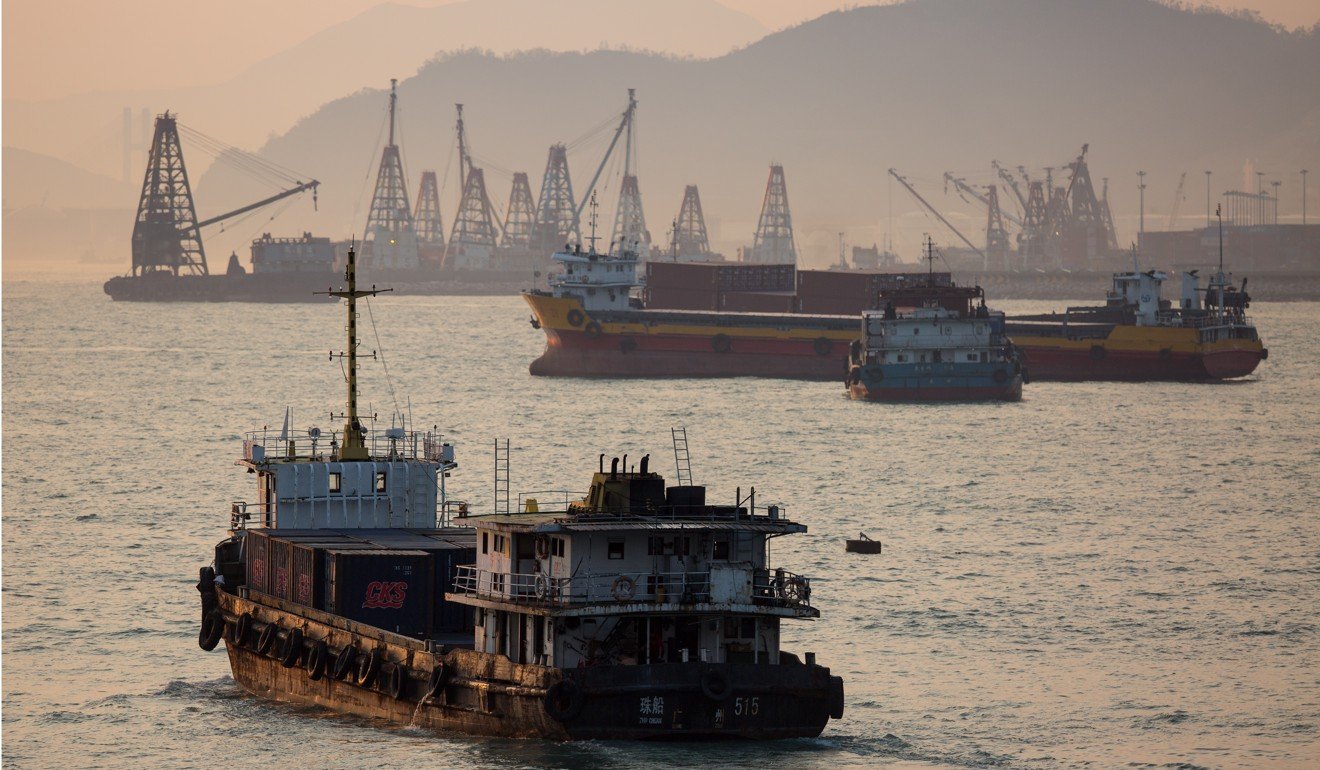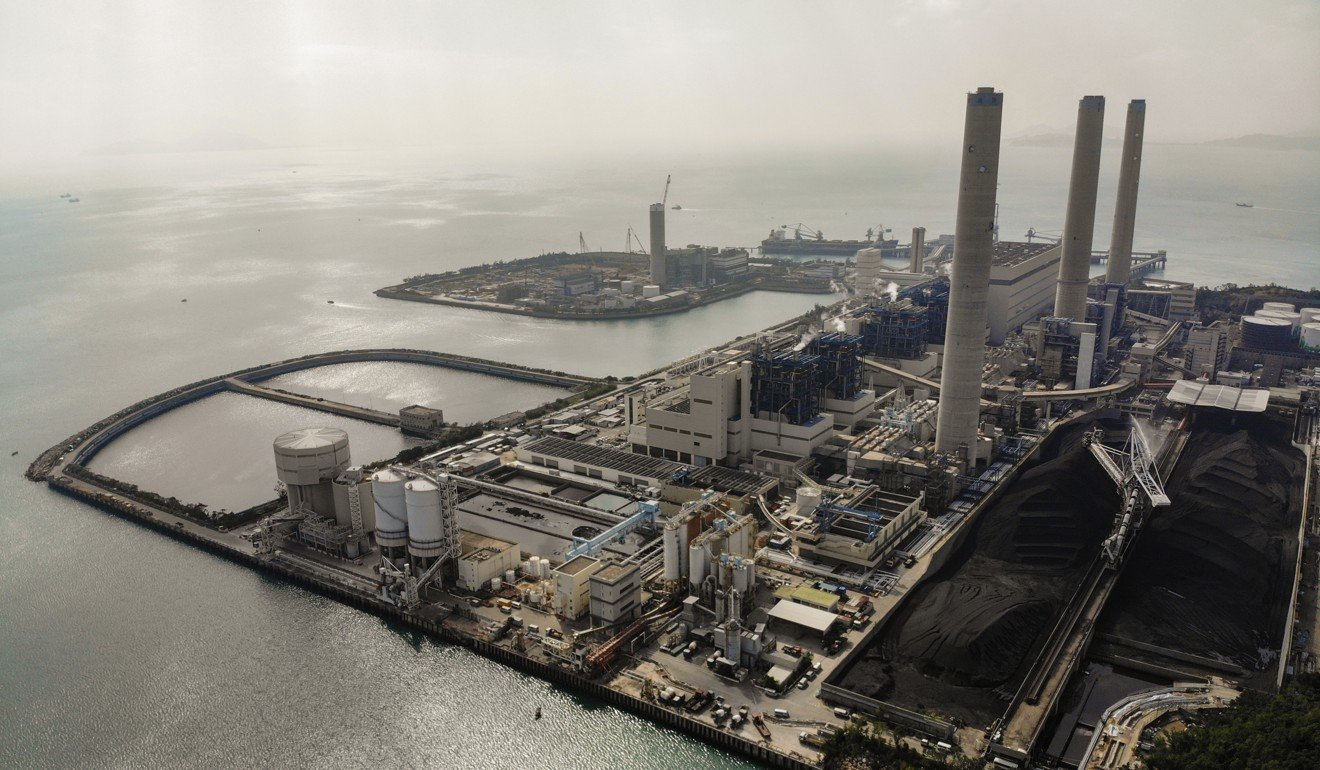Biggest source of air pollution in Hong Kong? It’s shipping, not cars, or mainland China
- An in-depth look at the sources of harmful gases and particles that are choking the city

There is more to Hong Kong’s air pollution than meets the eye – or throat. How often have you heard that the smog actually comes from across the border? Or that cars are responsible for the toxic clouds that regularly envelope the city? Such tropes are seldom accurate. Here, we break down Hong Kong’s noxious vapours to tell you where the pollutants are really coming from – and what can be done about them.
What are the most harmful pollutants?
● Particulate matter – PM10 and PM2.5
These are particles of solid and liquid matter so small they can remain suspended in the air. They are widely considered to be the most dangerous of the air pollutants, and the World Health Organisation considers them a Group 1 carcinogen: an agent proven to cause cancer in humans.
The numbers refer to their size in micrometres (millionths of a metre): PM10 are particles smaller than 10 micrometres in diameter; PM2.5 depict particles smaller than 2.5 micrometres. Particulates can come from a huge range of sources, from pollen and wildfires to power plants and car engines.
The smaller PM2.5 particles are considered to be even more harmful than PM10 particles, as they can penetrate further into the lungs and more easily enter the bloodstream. Aside from cancer, particulates can cause bronchitis and other lung conditions, aggravate asthma, and are linked to birth defects and heart disease.
● Sulphur dioxide
Most of the sulphur dioxide in the air comes from the burning of fossil fuels like coal and gas. This gas can cause respiratory illnesses and aggravates existing health problems like asthma. Additionally, it can react with water and air to create sulphuric acid, the main component of acid rain. Since the introduction of sulphur emission controls for power plants and the introduction of low sulphur diesel fuel in the 1990s, sulphur dioxide levels in Hong Kong have declined dramatically, from a peak of more than 100,000 tonnes produced in 2004 to less than 20,000 tonnes produced in 2016.
● Oxides of nitrogen
These include nitrogen dioxide and nitric oxide, which are usually the product of vehicle engines. By itself, nitrogen dioxide can cause inflammation of the airways, but in the presence of sunlight, it can react with airborne volatile organic compounds to form ozone, which can cause or aggravate a variety of lung diseases. These gases are also instrumental in the formation of acid rain and are involved in the creation of particulates.

How does Hong Kong’s status as a shipping hub affect air quality?
The trade that made Hong Kong rich also happens to be the one choking us. Ships – container ships in particular – are far and away the leading source of the major components of air pollution, producing most of the harmful sulphur dioxide, nitrous oxides and PM2.5 particulates that we breathe in daily. Figures released in 2009 showed that the world’s 90,000 ocean-going vessels produced 20 million tonnes of sulphur oxide – 260 times more than all the cars in the world combined.
According to the Environmental Protection Department’s latest emission inventory, in 2016, shipping in Hong Kong waters produced 8,540 tonnes of sulphur dioxide, 32,900 tonnes of nitrogen oxide and 1,480 tonnes of PM2.5 pollution.
In 2015, the government introduced a law requiring marine vessels to switch to low sulphur fuel while at berth in Hong Kong. In the following year, officials said sulphur concentrations had dropped by between 30 and 50 per cent. The regulation will be changed in 2019 to compel all ships operating in Hong Kong waters to switch to low sulphur fuel, whether stationary or moving.
The number of ships arriving in Hong Kong fluctuates with the global economy. Marine Department statistics show that overall, the number of ocean-going vessels arriving in Hong Kong has fluctuated over the past 10 years, but the figure rose 7.8 per cent last year from 2016. The numbers suggest that the city will remain a major player in the shipping industry for the foreseeable future – that is good for business, but bad for health.

Is there a cleaner way to generate electricity?
The city’s second-largest contributor of airborne nastiness is electricity generation. Hong Kong’s largest power stations are those at Castle Peak, burning coal and oil-gas; and Lamma, burning coal. After 2008, power plants began instituting emission caps mandated by the government, and a notable reduction in sulphur dioxide has been seen: from about 50,000 tonnes in 2008 to 8,020 tonnes in 2016. But with 25,620 tonnes of nitrogen oxide produced in 2016, power generation is still second only to shipping when it comes to emissions, though it is worth noting that the power plants produce far less PM2.5 pollution – 310 tonnes in 2016 compared with shipping’s 1,480 tonnes.
The government does not appear to have plans to invest in large renewable energy generation in the short or medium term. A general notice on the government’s web portal reads: “Hong Kong does not have favourable conditions for large-scale commercialised RE [renewable energy] generation”, though it adds that small-scale pilot projects are under way, including floating photovoltaic systems at two of the city’s reservoirs.

How have Hong Kong’s roads contributed to bad air?
The overwhelming majority of Hong Kong’s cars, buses, trucks and motorcycles – more than 98 per cent – are still powered by fossil fuels via their internal combustion engines.
Despite this, owing to the introduction of fuel and vehicle emission standards, measured rates of particulate matter, sulphur dioxide and nitrogen oxides have seen drops of between 50 and 70 per cent since 1999. However, roadside pollution in busy areas remains extremely hazardous to health, as the densely packed, tall buildings create canyons in which particulates and gases gather.
The bustling shopping district of Causeway Bay is often cited as having the worst roadside pollution in the city, with PM2.5 concentrations registering above the WHO’s guideline limit of 25 micrograms per cubic metre on 227 days of the year in 2016.
The use of electric vehicles in Hong Kong has expanded from 100 in 2010 to more than 11,000 at the end of 2017, though the government has recently lowered tax concessions for electric private cars. As for public transport, Hong Kong’s record is woeful: according to the government’s Pilot Green Transport Fund, only 21 single-deck electric buses are currently on trial runs in the city. By comparison, Hong Kong’s mainland neighbour, Shenzhen, already boasts a 100 per cent electric bus fleet of about 16,000 vehicles.

Do planes contribute to air pollution?
Aviation is responsible for about 1 per cent of Hong Kong’s air pollution, which might not sound like too grave a threat. But data collected via air quality monitoring in Tung Chung suggests that the local impact can be severe, with huge fluctuations in pollutants found near the airport. Ozone spiked at concentrations as high as 86 micrograms per cubic metre of air in 2017, compared to highs of about 40 micrograms per cubic metre at the roadside in Causeway Bay.
While it is true that newer aircraft are being designed for better efficiency and should therefore produce fewer emissions, air traffic at the airport has soared from a total of 295,000 international passenger and cargo flights in 2007 to 421,000 in 2017, an increase of 43 per cent. That figure is set to rise further following completion of the third runway in 2024 – though the government has claimed that the development, intended to handle an additional 30 million passengers per year, will not create more air pollution.
Where else is the pollution coming from?
The Environmental Protection Department defines “other combustion” as involving mainly non-road machinery, such as construction machinery. Construction machinery often relies on “dirtier” fossil fuels such as diesel, meaning that this more obscure source of pollution produces far more than its fair share of particulates.
There are also non-combustion sources, which include chemicals found in paints, printing inks, solvents, adhesives and some consumer products. Non-combustion sources are a key contributor to the presence of volatile organic compounds in the air.
Clearing the air
As polluted as the city’s air can seem, it is important to look at the bigger picture: in the long term, efforts to cut emissions do appear to be having a positive impact. The government’s annual air quality health index (AQHI) shows a steady decline in the mean concentrations of pollutants. The index suggests levels of PM2.5 pollution in Causeway Bay, the aforementioned pollution black spot, dropped by almost half between 2011 and 2017. Meanwhile, the Hedley Environmental Index, operated by the University of Hong Kong’s School of Public Health, reports that in 2017, there were 1,866 deaths linked to air pollution in Hong Kong. This is a decline of about 40 per cent from the total recorded in 2012, the first year for which the index has data.